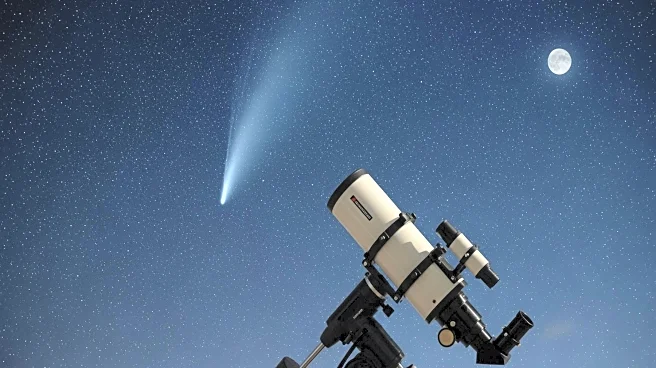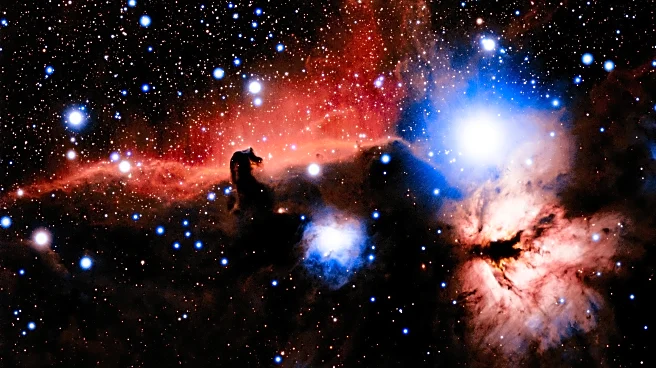What's Happening?
Astronomers have identified a unique astronomical object within the Milky Way, described as a nearly perfect spherical supernova remnant. This object, named G305.4-2.2, has been nicknamed 'Teleios' due to its almost perfect spherical shape, which is unusual
for supernova remnants that typically form asymmetrical shells. The discovery was made using data from the Australian Square Kilometre Array Pathfinder (ASKAP). Researchers at the University of Western Sydney have ruled out other potential sources such as planetary nebulae, Wolf-Rayet bubbles, and even the speculative Dyson sphere. The object's luminosity suggests it is located between 7,175 and 25,114 light-years from Earth, with a diameter ranging from 46 to 157 light-years. The age of the remnant is estimated to be between 1,000 and 10,000 years. The study suggests that the remnant is likely from a Type Ia supernova, which occurs when a white dwarf absorbs enough matter from a companion star to explode.
Why It's Important?
The discovery of G305.4-2.2 is significant as it challenges existing understandings of supernova remnants, which are crucial in the study of galactic evolution. These remnants enrich the interstellar medium and influence its structure and physical properties. The identification of such a perfectly spherical remnant could provide new insights into the dynamics of supernova explosions and the conditions of the interstellar medium. With only about 300 supernova remnants identified in the Milky Way, and estimates suggesting there could be over 2,000, this discovery highlights the potential for further astronomical findings. Understanding these remnants can enhance knowledge of cosmic phenomena and the lifecycle of stars, impacting theories on galaxy formation and evolution.
What's Next?
Astronomers plan to conduct high-resolution, multi-frequency observations to gather more direct evidence about G305.4-2.2. These observations could confirm the object's characteristics and provide further insights into its origin and nature. The ongoing study of supernova remnants is expected to continue, with researchers aiming to identify more such objects within the Milky Way. This could lead to a better understanding of the role these remnants play in galactic evolution and the enrichment of the interstellar medium. The findings may also influence future astronomical research and the development of new technologies for observing distant cosmic phenomena.
Beyond the Headlines
The discovery of G305.4-2.2 raises questions about the processes that lead to the formation of such perfectly spherical supernova remnants. It challenges existing models of supernova explosions and the interaction of ejected matter with the interstellar medium. The study of this object could lead to revisions in the understanding of stellar evolution and the mechanisms behind supernova explosions. Additionally, the discovery underscores the importance of advanced astronomical instruments like ASKAP in uncovering new cosmic phenomena, potentially leading to technological advancements in the field of astronomy.















